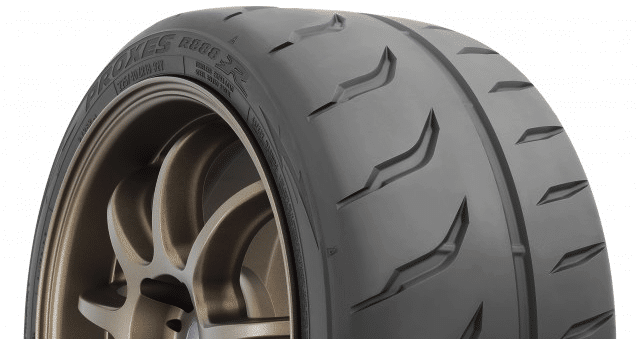All Categories
Featured
Table of Contents
The Michelin supplied a comfy driving experience, qualified by receptive steering and a dynamic understeer equilibrium. In spite of the cooler screening conditions, Michelin's consistent time and grasp over three laps shows its suitability for real-world applications. On the other hand, Yokohama's efficiency was distinct. While its super-quick steering led to a rapid front axle turn, the rear revealed a tendency to swing a lot more.
The tyre's first lap was a 2nd slower than the second, aiming to a temperature-related hold rise. For day-to-day use, the Michelin could be a more secure wager.
Leading Tyre Shop Near Me – Caversham WA
It shared Michelin's secure understeer equilibrium but lacked the latter's readiness to turn. Continental and Goodyear's efficiencies were remarkable, with Continental's brand-new PremiumContact 7 showing a substantial enhancement in damp conditions contrasted to its precursor, the PC6. This version was much much less conscious fill changes and acted just like the Michelin, albeit with a little less communication at the limitation.
It integrated the secure understeer balance of the Michelin and Continental with some stylish handling, confirming both predictable and fast. As an all-rounder for this Golf GTI, Goodyear's Asymmetric variety was the standout, showing remarkable efficiency in the damp. The Bridgestone Potenza Sporting activity took the crown as the fastest tire, albeit by a small margin.
This tyre obtained grippier as it heated up, similar to the Yokohama. Vehicle drivers looking for an interesting damp drive might locate this tyre worth thinking about. The standout performer in wet stopping was the latest tyre on test, the PremiumContact 7, though the results are nuanced. We performed damp stopping tests in 3 different means, twice at the brand-new state and once at the used state.
Top Low-cost Tyres – Swan
Ideally, we wanted the cool temperature test to be at around 5-7C, however logistical hold-ups suggested we evaluated with an ordinary air temperature level of 8C and water at 12C. While this was cooler than standard test conditions, it was still warmer than real-world conditions. The cozy temperature level examination was done at approximately 18C air and 19C water.
The third run entailed damp stopping examinations on worn tires, particularly those machined down to 2mm with a small run-in. While we meant to do more with these used tires, climate restraints limited our screening. It's worth keeping in mind that damp braking is most essential at the used state, as tires generally enhance in dry conditions as they wear.

It shared the most considerable efficiency decrease, along with the Yokohama, when worn. Bridgestone, Goodyear, and Michelin saw the least performance decrease when worn. Bridgestone and Goodyear's efficiency dipped in cooler problems. The Hankook tyre signed up the tiniest performance drop as temperature levels cooled, yet it was among one of the most impacted when used.
Honest Tyre Care Near Me – Swan 6055 WA
The take-home message here is that no single tire succeeded in all elements of damp stopping, suggesting a complicated interplay of variables affecting tyre efficiency under different conditions. There was a standout tire in aquaplaning, the Continental completed top in both straight and bent aquaplaning, with the Michelin and Goodyear additionally excellent in deeper water.

Yokohama can gain from somewhat more grip, a problem potentially affected by the colder problems. When it comes to dealing with, all tires done within a 2% range on the lap, demonstrating their premium performance (Tyre balancing). Taking into consideration these tyres basically target the very same customer, it's interesting to observe the significant distinctions in feel.
The shock is because the PremiumContact 6 was one of my favourites for stylish dry drives, but its successor, the PremiumContact 7, appears elder and resembles Michelin's performance. Among these, Hankook was the least exact in steering and communication at the limitation. Tyre upgrades. Both Michelin and Continental offered wonderful preliminary guiding, albeit not the fastest
If I were to recommend a tire for a rapid lap to a novice, claim my dad, it would be among these. Then we have the 'enjoyable' tyres, specifically Yokohama and Bridgestone. Both were speedy to guide and felt sportier than the others, but the compromise is a more lively rear end, making them much more tough to handle.
Honest Tyre Offers Near Me – Caversham
It gave comparable guiding to Bridgestone however used better feedback at the limit and far better grip. The Bridgestone Potenza Sport, nevertheless, seemed to weaken rather rapidly after simply 3 laps on this demanding circuit. There's Goodyear, which positioned itself someplace in between the fun tires and those tending towards understeer.
All in all, these tyres are superb entertainers. In terms of tire wear, the approach used in this examination is what the industry refers to as the 'gold requirement' of wear.
Both the Bridgestone and Yokohama tires significantly underperformed in comparison to the various other 4 tyres in terms of rolling resistance, with Continental a little outshining the remainder. Pertaining to the comfort degree of the tyres, as prepared for, many showed an inverse connection with handling. The Continental, Michelin, and Goodyear tyres executed ideal across different surface types examined.

Bridgestone started to reveal indicators of suppleness, while Yokohama was specifically rough over potholes. We did determine interior noise degrees; nevertheless, as is frequently the instance, the outcomes were closely matched, and due to weather restrictions, we were not able to perform a subjective assessment of the tyres sound. Lastly, we checked out abrasion figures, which determine the amount of tyre walk shed per kilometre, normalised to a one-tonne automobile.
Leading Vehicle Tyres Near Me – Swan
This figure stands for the amount of rubber dust your tyres produce while driving. Michelin led in this group, creating over 9% less rubber particulate issue.
Latest Posts
Trusted Tyre Inspections
Top Long-lasting Tyres Near Me – Dayton WA
Leading Tyre Performance Near Me